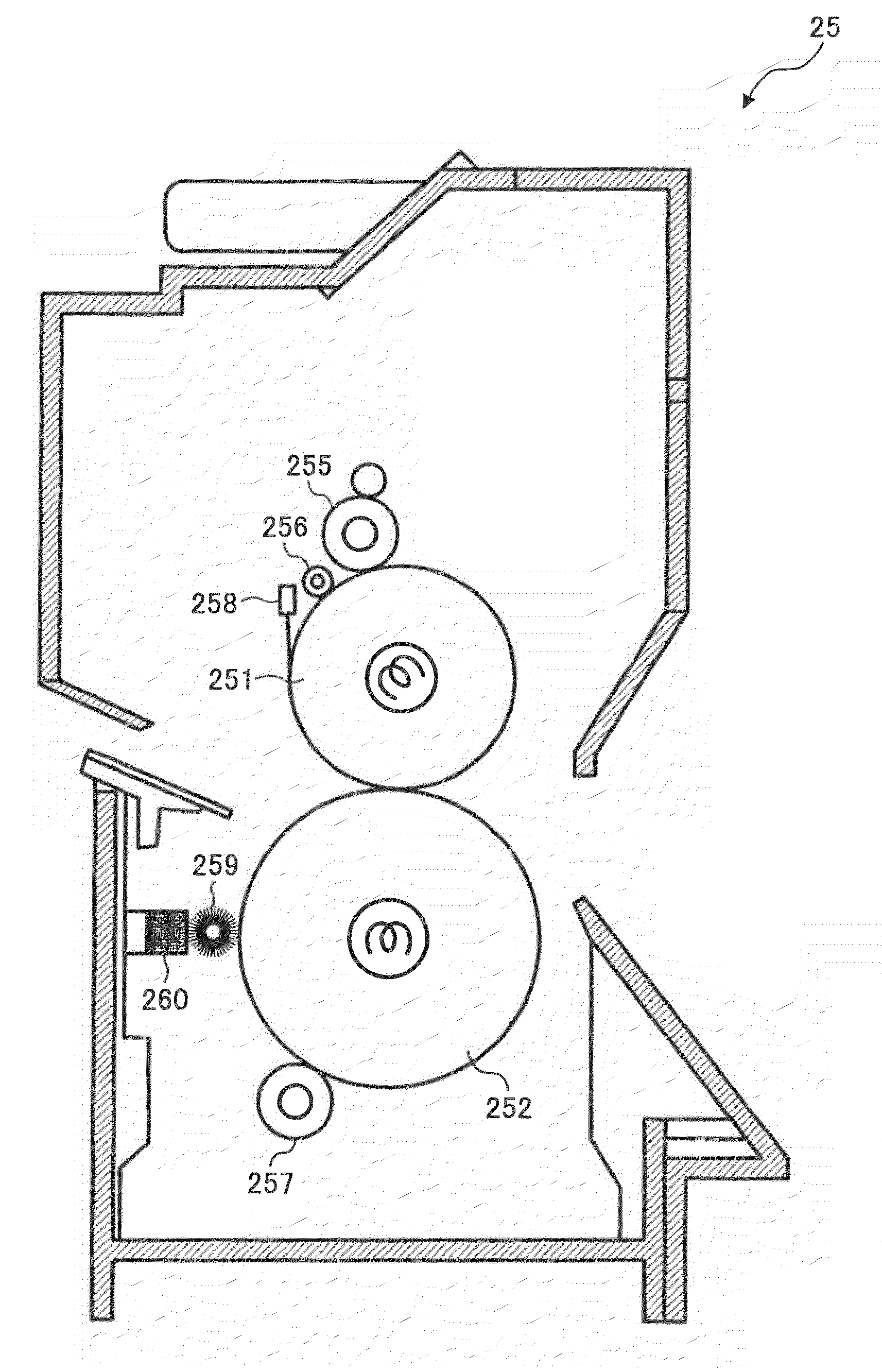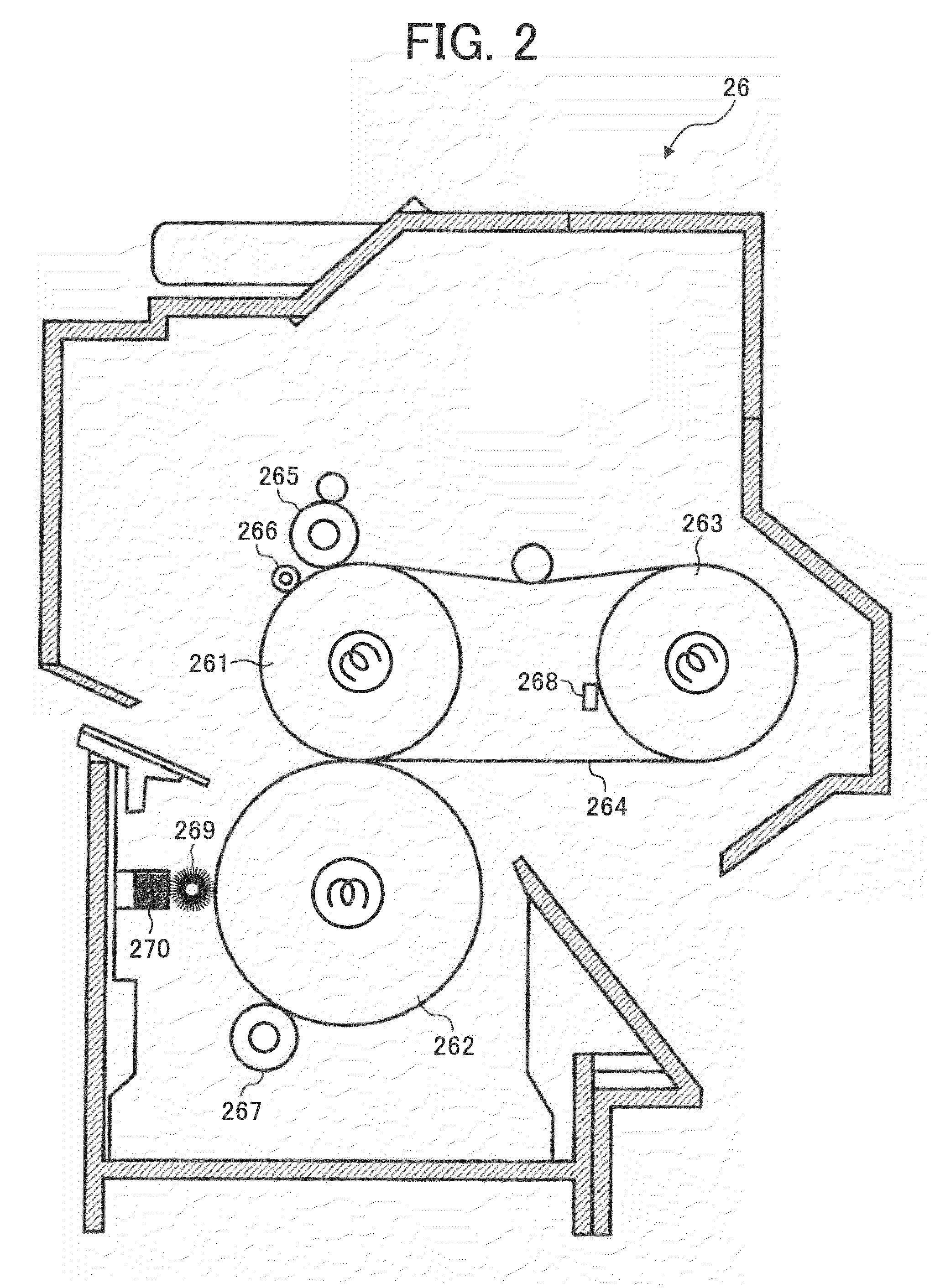Fixing device, and image forming apparatus using the fixing device
a fixing device and image forming technology, applied in the field of fixing devices, can solve the problems of unfixed toner layers adhesion, hot offset problem, cold offset phenomenon, etc., and achieve the effect of high quality toner images
- Summary
- Abstract
- Description
- Claims
- Application Information
AI Technical Summary
Benefits of technology
Problems solved by technology
Method used
Image
Examples
manufacturing example 1
Synthesis of Modified Polyester Resin (A-1)
[0303]The following components were contained in a reaction vessel equipped with a condenser, a stirrer and a nitrogen introducing tube and reacted for 8 hours at 230° C. under normal pressure.
[0304]
Ethylene oxide adduct (2 mole) of bisphenol A358 partsPropylene oxide adduct (2 mole) of bisphenol A381 partsIsophthalic acid200 partsTerephthalic acid127 partsDibutyl tin oxide 2 parts
[0305]The reaction was further continued for 5 hours under a reduced pressure of from 10 to 15 mmHg while removing water generated.
[0306]Thus, a polyester prepolymer having a hydroxyl value of 25 mgKOH / g and an acid value of 0.9 mgKOH / g was prepared.
[0307]After the reaction product including the polyester prepolymer was cooled to 80° C., 364 parts of ethyl acetate and 98 parts of isophoron diisocyanate were added thereto, and the mixture was reacted for 2 hours.
[0308]Thus, an ethyl acetate solution of a modified polyester resin (A-1) having a weight average molecu...
manufacturing example 2
Preparation of Blocked Amine Compound (B)
[0309]In a reaction vessel equipped with a stirrer and a thermometer, 30 parts of isophorone diamine and 70 parts of methyl ethyl ketone were contained and reacted for 5 hours at 50° C. to prepare a blocked amine compound (B).
manufacturing example 3
Preparation of Unmodified Polyester Resin (1)
[0310]The following components were contained in a reaction vessel equipped with a condenser, a stirrer and a nitrogen introducing tube to perform a polycondensation reaction for 8 hours at 230° C. under normal pressure.
[0311]
Ethylene oxide adduct (2 mole) of bisphenol A229 partsPropylene oxide adduct (3 mole) of bisphenol A529 partsTerephthalic acid208 partsAdipic acid 46 partsDibutyl tin oxide 2 parts
[0312]The reaction was further continued for 5 hours under a reduced pressure of from 10 to 15 mmHg. Then 44 parts of trimellitic anhydride were added thereto and the mixture was reacted for 1.8 hours at 180° C. under normal pressure. Thus, an unmodified polyester resin (1) was prepared.
[0313]The unmodified polyester resin (1) had a number average molecular weight (Mn) of 2,500, a weight average molecular weight (Mw) of 6,700, a peak molecular weight of 5,000, a glass transition temperature of 43° C., and an acid value of 25 mgKOH / g.
PUM
 Login to View More
Login to View More Abstract
Description
Claims
Application Information
 Login to View More
Login to View More - R&D
- Intellectual Property
- Life Sciences
- Materials
- Tech Scout
- Unparalleled Data Quality
- Higher Quality Content
- 60% Fewer Hallucinations
Browse by: Latest US Patents, China's latest patents, Technical Efficacy Thesaurus, Application Domain, Technology Topic, Popular Technical Reports.
© 2025 PatSnap. All rights reserved.Legal|Privacy policy|Modern Slavery Act Transparency Statement|Sitemap|About US| Contact US: help@patsnap.com



